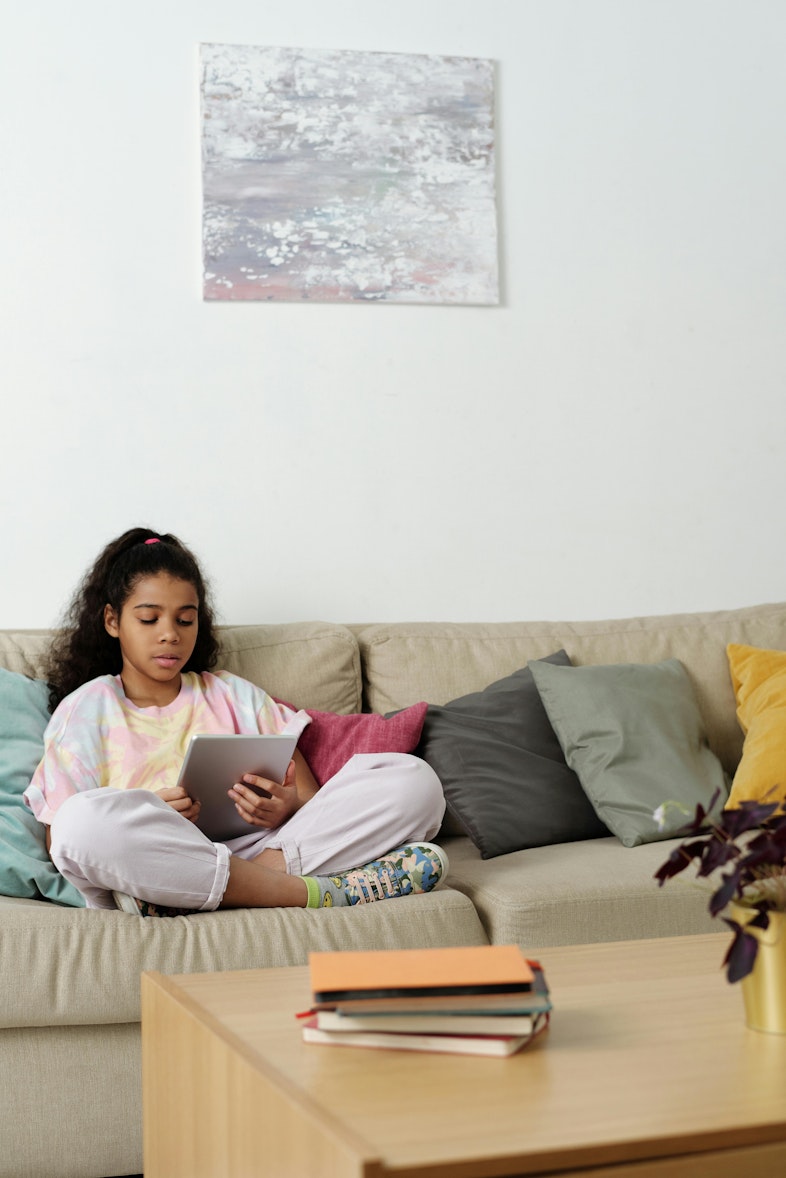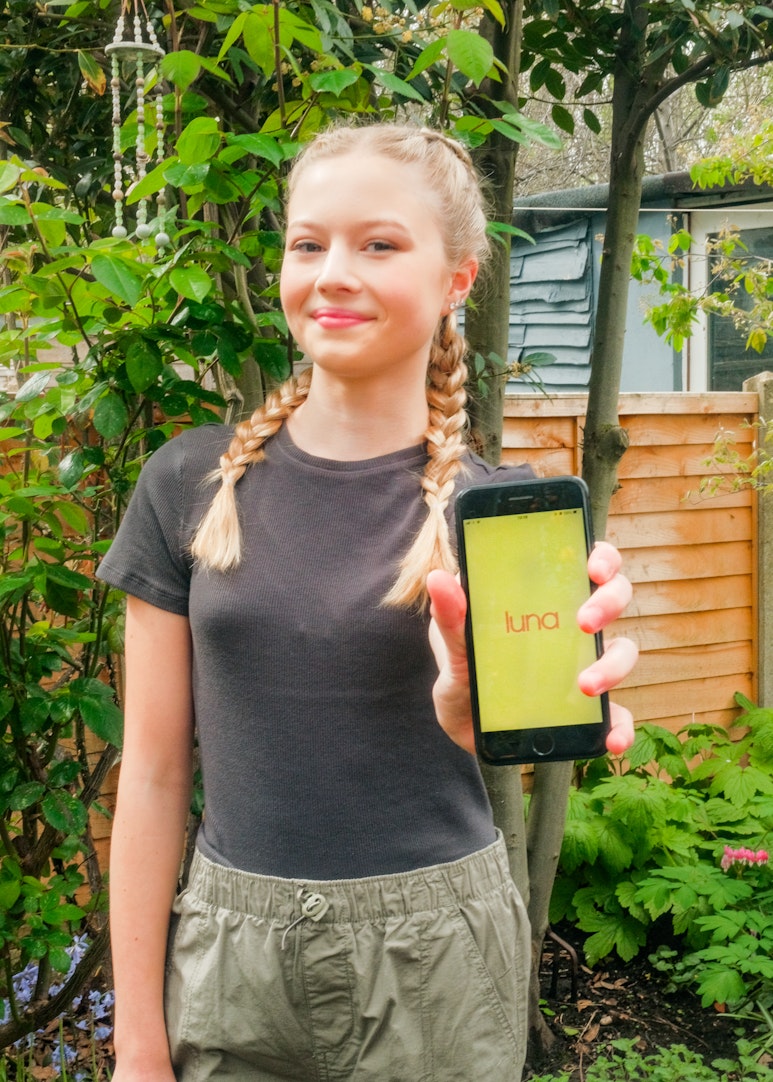
What are iPad kids?
And how to tell if your kid is an iPad kid?

Quick summary
- An “iPad kid” is a child who spends a lot of time on screens, often using a tablet to stay calm, entertained, or busy
- While screens can be useful, too much time on them can affect sleep, mood, and how kids focus or play without one
- The good news is it’s easy to make small changes – like setting simple rules, offering other things to do, and being present when you can

What is an iPad kid?
An iPad kid is a child who spends a lot of time using screens, usually tablets, often for games, videos or calming down during tricky moments.
The term has become popular online, often used with a bit of humour, but also with concern.
It’s sometimes used to criticise, but that’s not the approach luna’s taking.
The truth is, many children use tablets regularly, and many parents turn to screens for very valid reasons.
Maybe you needed five minutes of peace. Maybe you were trying to stop a meltdown in a café. Maybe it was the only way you could finish work or make dinner. And maybe it worked.
That doesn’t mean you’re doing anything wrong.
It just means you’re parenting in a world where screens are part of everyday life. And what really matters at the end of the day is finding a balance that feels right for your child and for you.
Why are kids called iPad kids?
The phrase started on social media, mostly from younger generations (like Millennials or Gen Z) who noticed how even younger people (children) were using tablets and phones.
It usually refers to children in Generation Alpha, who were born from 2010 onwards.
This generation has grown up surrounded by screens.
For them, watching videos, playing apps and video chatting with family members is completely normal.
In some cases, they’ve had access to a screen since before they could talk.
That doesn’t make them lazy, spoiled or disconnected. It just makes them children of their time.
The world they’re growing up in is different from the one many of us remember. It’s full of new challenges, but also new tools, and parenting has changed with it.
Why do parents give their kids iPads?
Because life is busy. Because parenting isn’t always easy. And because sometimes parents just need a quiet moment to think.
And sometimes, giving a child an iPad is the only thing that works.
Parents give their children screens for lots of reasons.
Some want to offer learning apps or calming shows. Others are trying to keep their child happy while travelling or waiting in a queue. Many just need a few minutes of peace at the end of a long day.
Screens can help soothe tantrums, settle nerves, or give parents the space to take a breath.
They’re not the enemy; they’re just one of many tools we use to make family life work, and finding a balance – as with anything – is very tricky!
So with that said, when screen time becomes constant or hard to limit, it can feel like you’ve lost control of it. And that’s where some gentle and intentional changes can help.
Signs your child might be an iPad kid
There’s no official checklist, but here are a few things to look out for.
You might notice that your child:
- Asks for the tablet first thing in the morning or during meals
- Gets very upset when screen time ends
- Finds it hard to play without a screen nearby
- Would rather use a device than do other things like drawing, playing, getting outside, or chatting
Again, none of this means you’ve failed. It just means your child might be leaning on screens more than feels healthy to you, and you might be ready to try something different.
When should I give my child an iPad?
There’s no perfect age to introduce a screen, but the American Academy of Pediatrics offers some general guidance.
- Babies under 18 months: avoid screens completely, apart from video calls with loved ones
- Children aged 2 to 5: try to stick to an hour or less per day, and aim for high-quality age appropriate content
- Children over 6: create screen-time rules that work for your family, while making sure your child still has time for sleep, play, exercise and connection
Every family is different. What matters most is not the age a child starts using an iPad, but how it’s used, how often, and what else is going on in their day.
Is too much screen time bad for kids?
Spending a lot of time on screens can affect children in a few ways.
It may make it harder for them to fall asleep, concentrate, or handle boredom.
Sometimes, it can affect mood or energy levels.
But not all screen time is bad.
Educational games, stories, and calls with grandparents can be lovely.
Some kids use apps to build new skills, express their creativity or learn (as is the case with luna).

What matters is the quality of what they’re engaging with, and how it fits into the rest of their day.
There’s no need to feel guilty for letting your child watch a show so you could make dinner or take a break.
All children need rest, fun, and structure.
Screens can be a part of that mix, they just don’t need to be the whole picture.
How can you cut back on screen time without a fight?
If screen time has started to take over, you can slowly bring things back into balance.
You don’t have to go cold turkey, so here are some realistic ways to make changes:
Start small
You don’t have to overhaul everything at once.
Try replacing one screen session a day with something simple – a colouring activity, a snack picnic in the living room, or a short walk outside.
These swaps can feel small, but they build up over time.
Set clear boundaries
Try having screen-free times, like during meals or the hour before bed.
Keep tablets out of bedrooms if you can.
Consistent routines help children feel secure, even when they push back.
Offer other choices
Make sure your child has things to do that don’t involve screens.
It doesn’t have to be fancy. A pile of blocks, a sticker book, or time with a book can go a long way.
Leave the tablet at home sometimes - there’s lots of entertainment for children just being out and about, and the less they expect the tablet, the less they will eventually rely on it.
If they’re bored at first, that’s okay. It’s not necessary to be entertained 100% of the time!
Boredom often leads to creativity and it just takes practice.
Avoid using screens to fix every feeling
If your child is upset, tired or overstimulated, it can be tempting to offer the iPad to calm them down.
But learning to sit with those feelings – with your support – helps them develop important coping skills.
Try offering a cuddle, a quiet space, or something soothing like a story or soft toy.
Watch together when you can
Co-viewing turns screen time into connection time.
It helps your child learn from what they’re watching, and gives you the chance to talk, laugh and bond with them while you do.
It also gives you the chance to chat about things that have come up, and for you to provide context if there are things on the screen that don’t match your values.
Lead by example
It’s not easy, but children notice what we do.
Try to be mindful of your own screen use during family time – leave your phone in another room so you aren’t tempted to check messages and can properly connect with your child.
The more they see you putting your phone away, the more they’ll understand that unplugging matters.
Raising kids in the digital age isn’t always easy
Screens are part of everyday life now.
Sometimes they help, sometimes they take over.
Many parents feel stuck in the middle – wanting to be more present, but also needing to get through the day.
That push and pull is real, and it doesn’t make you a bad parent. It makes you a normal one.
What matters most is finding a rhythm that works for your family, one that includes time to connect, time to play, and space to grow.
And if you ever feel overwhelmed or unsure, the luna app is here to help. It’s full of expert advice about screen time, ideas to help them get out into the real world, and tools to help them track and manage their moods.
Parenting isn’t easy, but with the right tools and a little support, it can feel a lot more manageable.

How we created this article:
luna's team of experts comprises GPs, Dermatologists, Safeguarding Leads and Junior Doctors as well as Medical Students with specialised interests in paediatric care, mental health and gynaecology. All articles are created by experts, and reviewed by a member of luna's senior review team.
Sources:
AACAP "Screen time and children" | Accessed 29.07.25
https://www.aacap.org/AACAP/Families_and_Youth/Facts_for_Families/FFF-Guide/Children-And-Watching-TV-054.aspxCHOC "The effects of screen time on children" | Accessed 29.07.25
https://health.choc.org/the-effects-of-screen-time-on-children-the-latest-research-parents-should-know/We'd love to keep in touch!
Sign up to our parent newsletter for emails on the latest teen trends, insights into our luna community and to keep up to date
By signing up, you are agreeing that we can use your email address to market to you. You can unsubscribe from marketing emails at any time by using the link in our emails. For more information, please review our privacy statement.